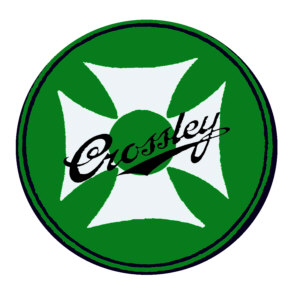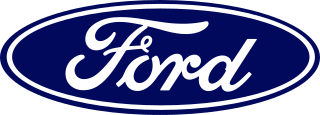
Sirron Cars were built at York Works, South Road, Southall, Middlesex, England, from 1909 to 1914. [1] Several models were produced, ranging from 10 to 25 horsepower. [2] A typical Sirron was priced at 200 guineas. [3]

Sirron Cars were built at York Works, South Road, Southall, Middlesex, England, from 1909 to 1914. [1] Several models were produced, ranging from 10 to 25 horsepower. [2] A typical Sirron was priced at 200 guineas. [3]
The Sirron name was later used by the Newbury Diesel Company for its diesel engines, which were designed by Henry Kent Norris. Sirron is Norris spelt backwards. Henry Kent Norris (died 1969) was a racing motorist who took part in Tourist Trophy races before World War I. [4] It is not known whether Henry Kent Norris was connected with Sirron Cars.

Crossley Motors was an English motor vehicle manufacturer based in Manchester, England. It produced approximately 19,000 cars from 1904 until 1938, 5,500 buses from 1926 until 1958, and 21,000 goods and military vehicles from 1914 to 1945.

L'Aster, Aster, Ateliers de Construction Mecanique l'Aster, was a French manufacturer of automobiles and the leading supplier of engines to other manufacturers from the late 1890s until circa 1910/12. Although primarily known as an engine mass manufacturer the company also produced chassis for coach-works and a complete range of components.

Newbury Street is located in the Back Bay area of Boston, Massachusetts, in the United States. It runs roughly east–west, from the Boston Public Garden to Brookline Avenue. The road crosses several major arteries along its path, with an entrance to the Massachusetts Turnpike westbound at Massachusetts Avenue. Newbury Street is known for its retail shops and restaurants.

Autocar is a weekly British automobile magazine published by Haymarket Media Group. It was first published in 1895 and refers to itself as "the world's oldest car magazine". Mark Tisshaw is editor and other team members include Steve Cropley, Rachel Burgess, James Attwood, Matt Prior, Matt Saunders and Felix Page.

Stevens-Duryea was an American manufacturer of Veteran and Brass Era automobiles in Chicopee Falls, Massachusetts, between 1901 and 1915 and Vintage Cars from 1919 to 1927.

Ford Motor Company Limited, trading as Ford of Britain, is a British wholly owned subsidiary of Ford Technologies Limited, itself a subsidiary of Ford International Capital LLC, which is a subsidiary of Ford Motor Company. Its business started in 1909 and has its registered office in Laindon, Essex. It adopted the name of Ford of Britain in 1960.

The Modesto and Empire Traction Company is a Class III short-line railroad operating in California's San Joaquin Valley. It is owned by the Beard Land & Investment Company; the Beard family has always owned the railroad. The Beards also created the Beard Industrial Park where the MET's customers are located. The railroad was unique in that it had operated for nearly 50 years exclusively with GE 70-ton switchers built between 1947 and 1955; however, a former Southern Pacific EMD SW1500 switcher was added to the roster as of late. The MET operates on 5 miles (8 km) of mainline track, as well as an additional 48.7 miles (78.4 km) of yard and industry track, providing switching services in the Beard Industrial Park. The MET interchanges with the Union Pacific at Modesto and with the BNSF Railway Stockton Subdivision at Empire.

MV Balmoral is a vintage excursion ship owned by MV Balmoral Fund Ltd., a preservation charity. Her principal area of operation is the Bristol Channel, although she also operates day excursions to other parts of the United Kingdom. The Balmoral is included on the National Historic Ships register as part of the National Historic Fleet.

Mercer was an American automobile manufacturer from 1909 until 1925. It was notable for its high-performance cars, especially the Type 35 Raceabout.
The Garrard & Blumfield or Blumfield & Garrard was an English electric car manufacturer from 1894 to 1896. The company is presumed to have been founded by C. R. Garrard and T. W. Blumfield.
The Brooklyn Eastern District Terminal was a shortline railroad and marine terminal with its main facilities and administrative offices located on 86–88 Kent Avenue in the Williamsburg section of Brooklyn, New York City.

Straker-Squire was a British automobile manufacturer based in Bristol, and later Edmonton in North London.
Perry & Co., Ltd was a dip pens manufacturer of England. The company was the largest in its country of origin, producing a huge range of models. Perry & Co. also manufactured bicycle chains and accessories.

The Boston Evening Traveller (1845–1967) was a newspaper published in Boston, Massachusetts. It was a daily newspaper, with weekly and semi-weekly editions under a variety of Traveller titles. It was absorbed by the Boston Herald in 1912, and ceased publication in 1967.
W.H. Dorman & Co was a company formed by William Henry Dorman in 1870 making cutting tools for the footwear industry. It diversified into other tools including grinders, and in 1903 into internal combustion engines. This was to be its main product up to the point where it was taken over by the English Electric Company in 1961, though the Dorman name continued as a diesel engine trademark until 1995. William Henry Dorman retired in 1911, and died in 1926.
Plenty and Son of Eagle Ironworks, Newbury, Berkshire, England, was an engineering company specialising in marine steam engines. The company was founded in 1800. In 1928, the company started to manufacture diesel engines under the name Plenty-Still, at Kings Road, Newbury. In 1932, the diesel engine business became a separate company named the Newbury Diesel Company. The Plenty name is now owned by SPX FLOW.
Founded in 1838, George Kent Ltd was initially a manufacturer of household gadgets, then a manufacturer of munitions during World War One, and became the largest British manufacturer of instruments for industrial control systems, prior to its acquisition by Brown Boveri in 1974.
Pilot Works and Friction Cars, Ltd. was a short lived British automobile company that produced cars from 1911 to 1912. The first and final Pilot automobiles were made by its holding company Motor Schools Limited between 1909 and 1911, and again in 1914.